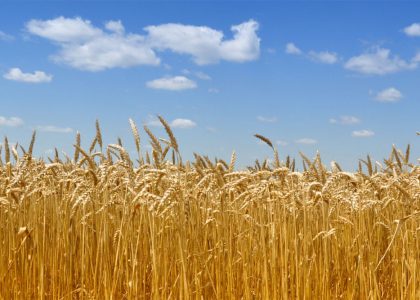We’ve discussed at length the balance between feeding a growing population in a world of declining resources. These discussions have been primarily focused on the grain markets and the enhanced yields of genetically modified organisms (GMO) versus any applicable health and environmental risks. This week, we’ll focus on a major development within the cattle industry as it tries to balance concern for public and animal well being against the dual mandate of feeding the world while generating some profit.
Tyson Foods unexpectedly announced that they were going to stop buying cattle from feedlots that use Zilmax on August 7th. Zilmax is the brand name of Merck’s beta-agonist feed supplement. The FDA originally approved beta-agonists for the treatment of asthma in humans. One of the noted side effects during the drug’s development was consistently muscular weight gain in treated mice. Merck used this as an opportunity to expand their animal care services and received FDA approval of Zilmax in 2006 for use in cattle. The entire beta-agonist family has received various approvals as a feed additive since 1999.
There is no doubt that cattle fed beta-agonists gain weight quickly. The cattle production cycle typically sends cattle to feed lots for, “finishing” before being sent to slaughter or, “processing” in today’s politically, correct terminology. This is where feed additives come into play and the final pounds are added on. Kansas State has a widely respected animal husbandry division and their published research clearly shows that feedlot animals have grown much larger and more quickly than they have in the past. Cattle are gaining more weight per day than ever and are spending less time on the feedlots. The feedlots, in turn are sending heavier animals to slaughter. The result is that the U.S. is producing nearly 20% more meat from nearly 20% fewer animals.
Tyson’s concern is based on the health of the animals being delivered to their processing facilities. We all remember the video clips on the news during the mad cow scare. These included disturbing images of animals unable to walk or shaking with tremors. That is a neurological disorder. The current issue is strictly physiological. Animals are becoming so large, so quickly that their bodies are shutting down as they try to support the dramatically rapid increase in mass. Dr. Bryan McMurry states that cattle now average 1,350 pounds and have gained 300 pounds over the last 30 years. His primary concern is that 1,350 pounds is now the average, which means over half the animals are larger and the first standard deviation places 16% of the animals above 1,500 pounds. His analysis shows that these animals aren’t even able to reproduce effectively through lower calf weights and lighter weaning weights. The animals simply require too much of their bodies effort to sustain themselves and therefore don’t have enough in reserve to foster healthy calves.
Our society is constantly debating the battles between science and morality. We’ve grown faster technologically than we have ethically. Revenues drive research. Morality is not a revenue producer. Tyson’s announcement that they will not accept Zilmax fed cattle after September 6th is a major statement considering they control 25% of the meat industry. However, they are a publically traded company and need to continue turning a profit. Therefore, they will still accept animals fed Ractopamine and Optaflexx made by Eli Lilly. Neither of these compounds has been as effective as Zilmax, which has been banned in over 100 countries but both are better financial alternatives to longer finishing times and lower weights.
The financial implications on the cattle futures market have been a chaotic glimpse into the dichotomy of public speculative action versus the cooler heads of commercial traders. Initially, the market rocketed to limit up. Speculative buying on the idea that the largest packer in the U.S. would have to buy more cattle at lighter weights going forward fueled this. The secondary reaction brought the market back to unchanged and lower as it digested the fact that there will be an initial glut of cattle coming to market to beat the September 6th deadline. Commercial traders meanwhile have been light buyers over the last week. I felt the important thing was to wait on commercial reaction to the news. This meant I had to wait for this week’s Commitment of Traders report.
The math behind lighter cattle means that another 90 million bushels of corn will have to be dedicated towards animal feed rather than ethanol or other crops or development land. We will also need to add about 10 million more cattle to the production chain to make up for lighter weights. That represents an increase of more than 10%. The balancing act comes down to the environmental strains of producing another 10 million animals and growing another 90 million bushels of corn against as well as higher processing costs at the slaughterhouses and extra finishing time at the feedlots versus profitability. This will lead to higher prices down the road in spite of a short-term glut of animals coming to market.





